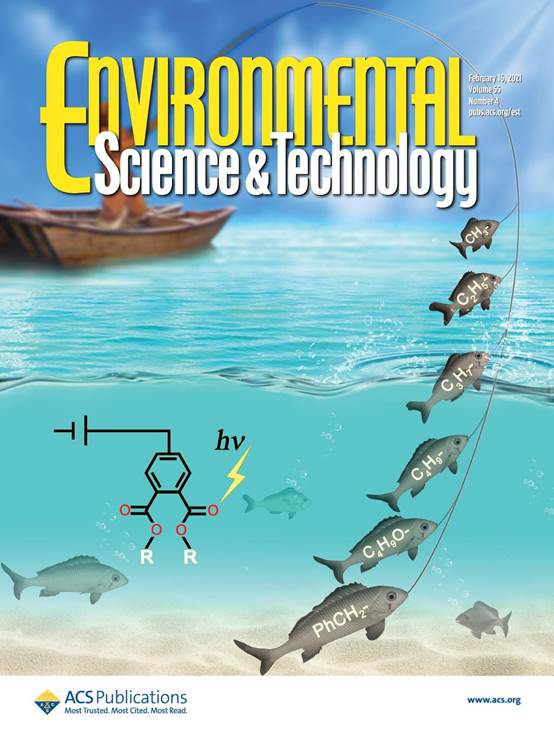Recently, a research paper entitled “Selective Photoelectrocatalytic Removal for Group-Targets of Phthalic Esters” of Prof. ZHAO Guohua and Prof. ZHAO Yinghong’s team from the School of Chemical Science and Engineering (SCSE) was published on Environmental Science & Technology and highlighted on the second and third inner pages. Their research results provide a novel strategy of selective photoelectrocatalytic oxidation for identifying characteristic phthalate group-targets in the same class of phthalate esters (PAEs), which can achieve simultaneous selective removal of a class of target pollutants at low concentration and high toxicity in complex aqueous systems.

In recent years, advanced oxidation process (AOPs) based on hydroxyl radical (·OH) have attracted extensive attention for their undifferentiated strong oxidation ability. Related research efforts have focused on removing emerging contaminants with low concentrations and high toxicity, such as endocrine disruptors, perfluorinated compounds, etc. However, in general, endocrine disrupting chemicals (EDCs) often coexist at low concentrations of ng/L-μg/L in complex systems of other low toxic organic substances of 10-100 mg/L. Therefore, there is often the presence of natural organics or residual organics in the effluent in the actual water treatment process, making a large amount of generated ·OH rapidly consumed (107~108 MC-1 s-1) in a high concentration of low toxicity non-target organics. This leads to a situation that although the macro indicators such as CODCr meet the effluent emission standards, these highly toxic and difficult-to-treat pollutants can not be effectively removed, which inevitably brings potential environmental risks. Moreover, these EDCs are so diverse that the same class of contaminants often have similar structures and properties and often appear simultaneously in the contaminated system to be treated. For example, PAEs, which contain more than ten species such as dimethyl ester, diethyl ester, di-n-butyl phthalate, diisobutyl phthalate and di-n-octyl phthalate, have similar phthalate group structures, and all have certain ecological and environmental risks and EDCs, which should be removed simultaneously as far as possible. Therefore, it has become a research challenge to develop a selective APO that can be applied to remove a class of low-concentration and highly toxic target pollutants in complex aqueous systems.
In their research work, Prof. ZHAO Guohua and ZHAO Hongying’s team uses three-dimensional titanium dioxide with photonic crystal structure modified by the template method as photoanode to construct a selective recognition surface for phthalate target pollutants. PAEs enriched on the surface are oxidized and removed by ·OH generated by photocatalysis so that the endocrine disrupting activity and aquatic toxicity of PAEs are finally eliminated. Under the coexistence of 10mgL-1 other low-toxicity organics, nine kinds of PAEs with a concentration of 30μg L-1 can be removed together effectively and completely, and almost 100% of the acute aquatic toxicity and estrogenic activity are eliminated. This selective photocatalytic strategy reduces photoelectric energy’s ineffective consumption on low toxic organics, thus significantly reducing the operating cost and offering a good application prospect. Meanwhile, the team explores this selective identification and oxidative removal mechanism using Quartz Crystal Microbalance (QCM), solid-state Nuclear Magnetic Resonance spectroscopy (NMR spectroscopy) method, Kinetic Isotope Effect (KIE), Electron Paramagnetic Resonance spectroscopy (EPR spectroscopy) method, and high-resolution Time-of-Flight Mass spectrometer (TOFMS), intending to provide a reference and theoretical basis for the selective removal a class of homologues from complex aqueous systems.
Prof. ZHAO Guohua and Prof. ZHAO Hongying are the paper’s corresponding authors, and the first author is SCSE’s PhD student CAI Junzhuo. The relevant research work has been funded by the Key Project of the National Natural Science Foundation of China.
Source: https://news.tongji.edu.cn/info/1003/76667.htm